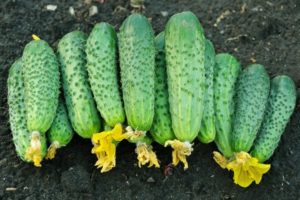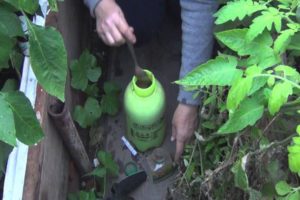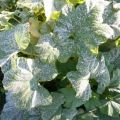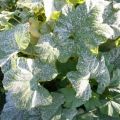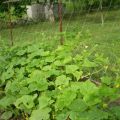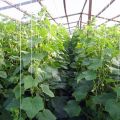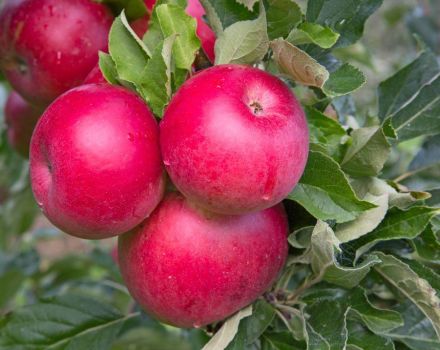How to properly tie cucumbers in a polycarbonate greenhouse
When growing cucumbers, you need to carefully look after the bushes. Many vegetable growers are engaged in their garter, which prevents young fruits from rotting on the ground. It is quite difficult for inexperienced people to do this. Therefore, it is recommended that you familiarize yourself in advance on how to tie cucumbers in a polycarbonate greenhouse.
Why is it done
Not everyone knows whether it is necessary to tie up cucumbers or if you can do without it. To understand, you should familiarize yourself with what the garter is for.
There are several main reasons for which it is necessary to make a garter to the supports. This is done to:
- simplify the process of picking ripe cucumbers;
- prevent the antennae from sticking to neighboring bushes;
- preserve the harvest and prevent flowers from falling;
- improve the lighting of bushes.
Cucumbers belong to the pumpkin family and therefore, during cultivation, they spread over the surface of the soil. If you do not tie them to the supports in a timely manner, then in the future it will be possible to lose most of the fruits even during flowering. Bushes that are not attached to a support suffer from a lack of light and because of this, their flowers begin to crumble. Also, some of the fruits can be lost during their ripening. If they lie on the ground for a long time, the process of decay will begin.
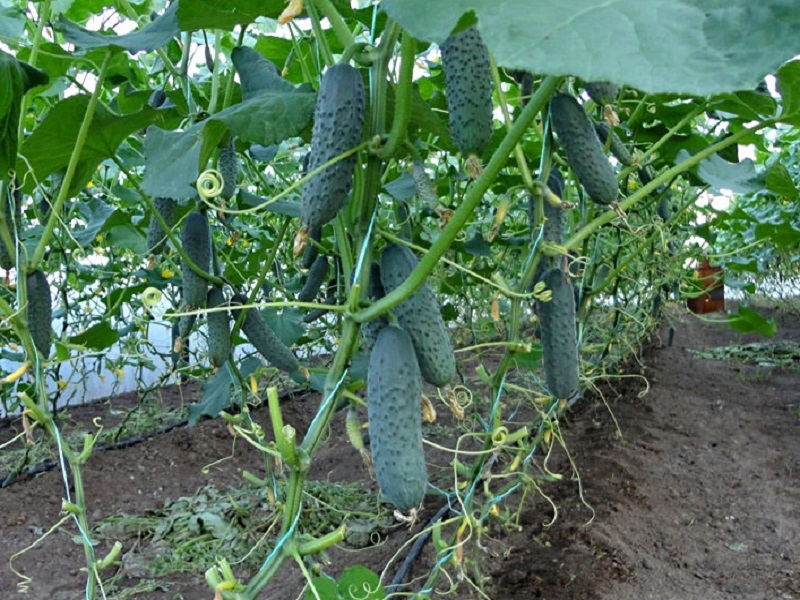
The lighting of the tied bushes is improved several times, since they are closer to the light source. This allows light to hit even the ovaries and fruits of the plant, and not just its leaves. Thus, the growth and development of young bushes is improved.
If the grower refuses to tie cucumbers in a polycarbonate greenhouse, there will be a risk of adhesion of shoots of neighboring bushes. This leads to the fact that they grow worse. Also, untied bushes are much more difficult to harvest. You often have to bend over and look for fruits.
During harvesting from the ground, there is a possibility of damage to the plants. Therefore, it is better to figure out in advance how to properly tie up cucumbers in the greenhouse and do it.
Tying cucumbers in a greenhouse is performed one month after planting seedlings in the soil. By this time, young bushes should grow up to 30-40 cm and about five flowers should appear on them. It is better not to postpone this procedure and perform it exactly at such times. Young seedlings are much easier to tie, as their stem is still quite elastic. Older bushes often break if bent too much.
Tools and materials
Correctly tying cucumbers in the greenhouse should be done with tools and materials that can anchor the bushes well to the supports. For this you will need:
- supports made of iron or wood;
- strong wire that will not sag;
- plastic or metal mesh.
It is very important to choose the most suitable tying material that does not damage the fragile stems of the bushes. Some gardeners use wire or fishing line for this. However, such material is completely unsuitable, since over time it will begin to pinch the plant and because of this it may die.

The best choice is cotton fabric, cut into several small strips of 2-5 cm wide. It is quite durable and can handle serious loads without problems. At the same time, it will not harm the stems, since wide fabric stripes will not pinch them. Alternatively, you can use synthetic nylon fabrics instead. Their advantages include the fact that they do not squeeze the plant and stretch well. Before using any tying material, it should be disinfected. It is carried out using chlorine solution or boiling water.
For a more reliable attachment of the bushes to the support, you can use special devices. Some gardening shops sell plastic clips that hold the fruit and tie the stems. Their main advantage is that they can be used for several seasons in a row.
Experienced gardeners use a special garter, the principle of which is very similar to a stapler. With this device, the support is gripped along with the stem and attached with a strong tape.
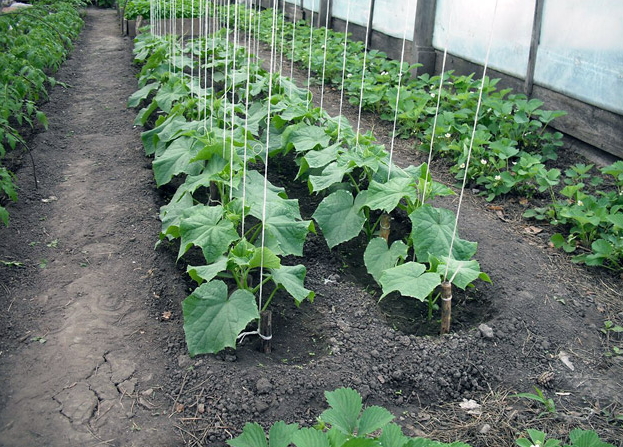
Basic ways
Before growing cucumbers, you should study the methods of their garter. There are various ways to tie cucumbers in a greenhouse. However, there are two main methods that are used most often.
Vertical tying
Before tying cucumbers in a greenhouse, you need to familiarize yourself with the vertical method. When using this method, you will have to use a durable lace. The rope is stuck into the soil with a peg, anchor, or staple. The second end rises to the tire, located almost under the roof itself. You can make the top splint yourself. Quite often it is made from ordinary wire, twine or a small wooden lath.
After creating and installing the tire, the stem of the bush can be tied to a rope.
Also, the stem can be tied up at the bottom. Some gardeners tie an extra string between the second and third leaf. To prevent the lace from pulling out and damaging the bush, it is recommended to pull it with a small slack. Tie the cord from above with a slip knot or loop. This is done so that in the future you can adjust its position.
Vertically tied cucumbers are best harvested. The vertical arrangement of the stems improves illumination. Also, this method of tying makes it possible to monitor the position of the stems and, if necessary, adjust it.
Horizontal tying
Not all gardeners know how to tie cucumbers in a greenhouse in a horizontal manner. For this, a rope and several laces are used, which must be pulled with a ladder. This is done at a distance of 45 cm from the soil. The spacing between each attached rope is approximately the same.
Sometimes people don't want to waste time pulling on their laces. In this case, they can be replaced with mesh or trellises. The netting is fixed between two high supports, which are located at the edges of the beds. The stems of the tied bushes will twine in a horizontal line, and the ripe cucumbers will begin to hang down.During the growth of the bushes, you will have to periodically shift the mustache. If side shoots appear, then they will have to be placed on the nearest horizontal.
This method is most suitable if you are growing cucumbers in a greenhouse, as in this case the bushes will not grow too high. However, because of this, there is a possibility that adjacent antennae will cling to each other.

Other methods
In addition to the basic tying methods, there are other methods that are used a little less often. You also need to familiarize yourself with them in order to understand which of the considered methods is the most appropriate.
Mixed method
It is most often used if the cucumbers were planted using a circular pattern. In this case, 10-15 iron rods are dug into the ground in such a way as to form a cone. Then a fine mesh is pulled over them, into the holes of which the stems and tendrils of the bushes will be launched.
It is quite easy to perform a garter on a cone structure made. To do this, it is enough to stretch the antennae into the holes, and over time they will begin to braid the mesh on their own. It is not recommended to use a mixed method for securing too young seedlings.
Using twine
It is recommended to use this method when the bushes have already grown 20-25 cm in height and there are five true leaves on them. If you use twine to tie up too young seedlings, you can accidentally break them.
Most often, vertical twines are used to tie greenhouse cucumbers. In this case, the loops are tied around the third or second leaf. Moreover, you should not tighten the loop too tight, as this can negatively affect the development and growth of the stems.
Sometimes stakes are used to fix the twine. They must be placed near the planted bushes. It is recommended to use pegs that are not too high. The optimal height is one meter, but sometimes higher supports can be used. In addition to the stakes, you will also need fabric strips that will be used to attach the whips.
The strips of fabric will be needed until the bush grows to the intersection of the twine with the peg. Then they can be removed, since the stem can be fixed to the twine.
Fence application
This method is not popular among vegetable growers, but it is quite convenient. To make a hedge for a garter, you will need a sturdy mesh, which will have to be pulled along the row of planted cucumbers. To ensure high-quality fastening, the bushes are tied to the fence with a strong rope. Installing the mesh is easy enough. To do this, several high stakes will have to be placed along the entire length of the row, to which the mesh will be attached.
The main advantage of this method is that in the future the bush can be gradually tied up at different levels.
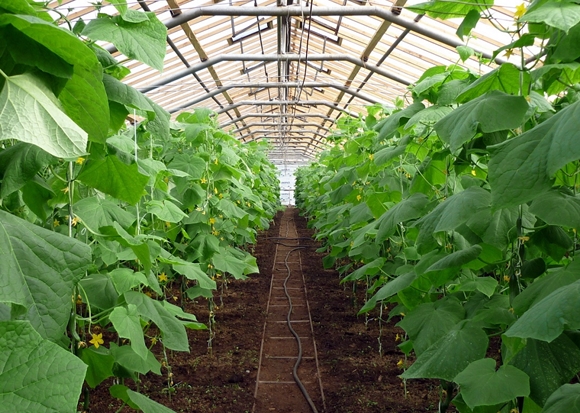
Garter on arches
Quite often, cucumbers are planted under arcs, to which they will be tied in the future. To create arcs, a strong wire is used, which is dug in near each row. This method is not very common among gardeners, since it is most often used when growing a large number of cucumbers.
Blindness
This method has been used by gardeners for many years for tying cucumbers. In this case, the main stem of the bush is tied to a special trellis. After that, all excess shoots and whiskers located in the upper part of the bush are removed from the plant.
Garter organization rules
There are several basic rules that must be followed when tying cucumbers to supports:
- You only need to tie up seedlings with a height of more than 30 cm.
- First, it is recommended to dig in the supports and only after that plant the seedlings.
- The stem is tied only after the third or second leaf.In this case, you should not press down the plant too much, as this can negatively affect the supply of nutrients.
- High lashes are trimmed at the height of the garter. This is done to improve the development and growth of seedlings.
- When leaving two lashes, only the strongest side shoots should be selected.
- It is best to use pegs made of wood when creating supports. Iron supports over time will begin to oxidize and damage bushes, and plastic slats will not be able to cope with serious loads. Also, good supports are made from plastic pipes. However, they will have to be dug deep into the ground for greater reliability.
- You need to tie up the stems with garden ropes, twine or fabric strips. Some gardeners use strips made from plastic bottles.
- To reduce the load, it is recommended to install supports every 1.5 meters.
Conclusion
Learning to make your own cucumber garter is very easy. To do this, it is recommended that you familiarize yourself with how to properly tie cucumbers in a greenhouse and what materials you need for this.
